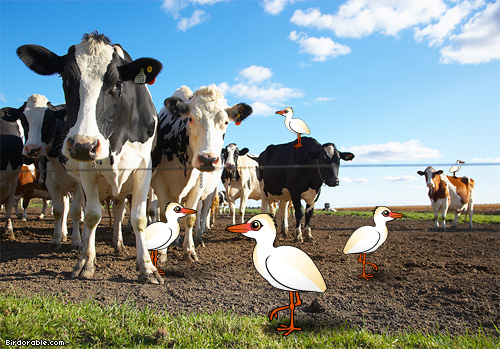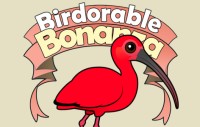Ten Cool Facts about Cattle Egrets

- The Cattle Egret has gone through one of the most rapid natural expansion of any bird. Originally native to Africa and Asia, it has expanded its range around the world. It reached the Americas in the late 19th century when it was first found in Guiana and Suriname in 1877, and Australia in the 1940s.[1]
- It arrived in the United States in 1941 and has since occurred all the way to Alaska and Newfoundland and has bred in nearly all fifty states. [2]
- Cattle Egret are opportunistic feeders and follow large animals or farm machines around to catch insects. It is estimated that they gather 50% more food using only two-thirds as much energy when feeding with livestock. [3]
- Cattle Egret are known to come in from far to catch insects fleeing from a fire. [4]
- The Cattle Egret sometimes adds birds to its diet. At Fort Jefferson in the Dry Tortugas, just off the coast of Florida, Cattle Egrets have been observed catching warblers because of a lack of insects on the island! [5]
- Cattle Egrets have been seen at airports waiting for airplanes to pass and blow insects out of the grass. [6]
- Its Arabic name Abu Gerdan (أبو قردان), means 'father of ticks', a name derived from the large number of parasites found in its breeding colonies. [7]
- Cattle Egrets greatly reduce the number of flies that bothers cattle by pecking them off their skin, as found by a study in Australia. [8]
- In 1959, the Hawaiian Board of Agriculture released 25 Cattle Egrets on Kaua'i to help control the flies and other insects plaguing cattle. [9]
- Its range is estimated globally at 10 million square kilometers with a global population of up to 6.7 million individuals. [10]
References
- http://en.wikipedia.org/wiki/Cattle_egret
- http://www.allaboutbirds.org/guide/Cattle_Egret/lifehistory
- http://animaldiversity.ummz.umich.edu/site/accounts/information/Bubulcus_ibis.html
- http://www.treknature.com/gallery/photo46938.htm
- http://research.myfwc.com/engine/download_redirec...
- http://www.enature.com/flashcard/show_flash_card.asp?recordNumber=BD0109
- http://www.oaklandzoo.org/animals/birds/cattle-egret/
- http://www.absoluteastronomy.com/topics/Cattle_Egret
- http://savekauai.org/community/island-history
- http://en.wikipedia.org/wiki/Cattle_egret






Comments
Leave a comment
Thank you!